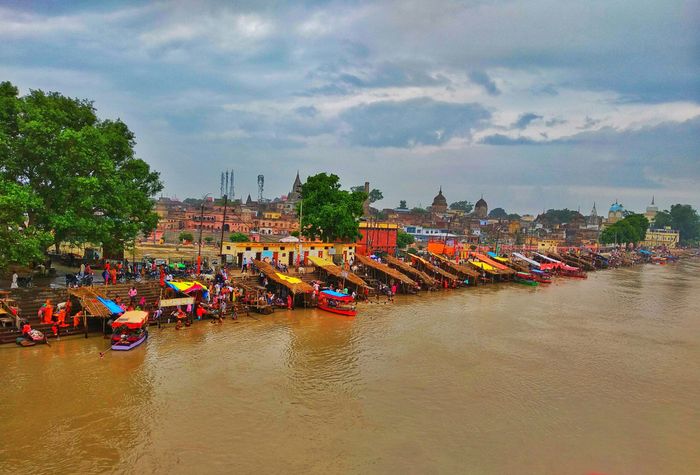Not Just a Pipe Dream: Making Tap Water Safe in India

Published on Aug 12, 2025
Sarith Sasidharan
By Sarith Sasidharan, IG&R SG member
A few years ago, I had a chance to visit Berlin. I was surprised to see that the hotel provided just two small water bottles in the room for the entire day. When I asked the hotel for more water, they suggested that I could drink from the tap in the bathroom. I was shocked to hear their suggestion because, coming from India, tap water is at best used for bathing, but is never consumed directly. The reason behind this situation is primary distrust in the quality of water supplied by the government or utility providers.
India faces a deepening water quality crisis, with more than 70% of surface water sources considered unsafe for direct human use. The Central Pollution Control Board (CPCB) has identified pollution in 351 river stretches in 2018 [1], largely driven by untreated sewage, industrial effluents, agricultural runoff, and poor urban planning. To make matters worse, groundwater is increasingly contaminated with fluoride, arsenic, and nitrates.
To address this, India has established a wide array of regulatory frameworks and institutional mechanisms. The Water (Prevention and Control of Pollution) Act, 1974 [2], was the first major step in empowering pollution control boards to monitor and curb industrial discharge. The Environment (Protection) Act, 1986 [3], enables the central government to set quality standards and take direct enforcement action. Complementing these, the National Water Policy, 2012 [4], emphasised the need for integrated water resource management, including quality conservation.
Moreover, schemes like the Namami Gange Mission, Jal Jeevan Mission, and Atal Mission for Rejuvenation and Urban Transformation (AMRUT) represent more recent interventions aimed at improving urban and rural water infrastructure and reducing pollution loads in critical water bodies. However, implementation remains inconsistent due to overlapping jurisdictions, limited monitoring capacity, and insufficient public participation.
Odisha’s ‘Drink from Tap’ mission, implemented by the Water Corporation of Odisha (WATCO), a water utility in Bhubaneshwar, showcases the critical role of regulation, monitoring, and governance in ensuring safe drinking water. Anchored in compliance with Indian Standard (IS 10500) water quality norms, the mission employs advanced real-time monitoring systems, including Programmable Logic Controller (PLC)/Supervisory Control and Data Acquisition (SCADA) and GIS-based asset mapping, to maintain water safety [5].
Capacity building through specialised training abroad has strengthened institutional expertise in WATCO, enabling the adoption of modern treatment technologies and operational best practices. Public awareness campaigns and transparent data sharing in public places further enhance citizen confidence. Together, these regulatory and governance mechanisms have made Odisha a pioneering example in delivering 24×7 safe drinking water directly from taps, setting a national benchmark for urban water safety and sustainability.
The contrast between Berlin’s tap water confidence and India’s bottled water dependency highlights more than infrastructure—it reflects public trust built through strong regulation and transparent governance. Odisha’s success story proves that with clear standards, community involvement, and transparent enforcement, safe tap water is possible even in Indian cities. To replicate this nationwide, India must invest not only in treatment plants but also in institutional capacity, real-time monitoring, and citizen trust. Clean water is not a luxury—it’s a basic human right. Ensuring it reaches every tap means holding our systems accountable, empowering local efforts, and believing in the power of good governance to transform lives.
*Note: This blog article is part of a new blog series aligned with the International Water Association’s Safe Drinking Water in Developing Countries Programme and the Water Policy and Regulation Agenda. This new blog series aims to raise awareness, build connections across technical, regulatory, and governance communities, share proven and emerging solutions, and inspire multi-level action on one of the most urgent global public health challenges of our time. Articles that are part of this series will explore the significance of strong regulatory frameworks and enforcement mechanisms in safeguarding public health. If you would like to submit an article for this series, please contact Brenda Ampomah at brenda.ampomah@iwahq.org and Isabela Espindola at isabela.espindola@iwahq.org.
[1] Press Release: Press Information Bureau
[2] the_water_(prevention_and_control_of_pollution)_act,_1974.pdf
[3] CPCB | Central Pollution Control Board
[4] Microsoft Word – NWP,2012(Eng).docx
[5] 624eb41e1f6e6Drink-from-Tap-Mission-A-case-study-of-24×7-Water-Supply-in-Puri-city.pdf
